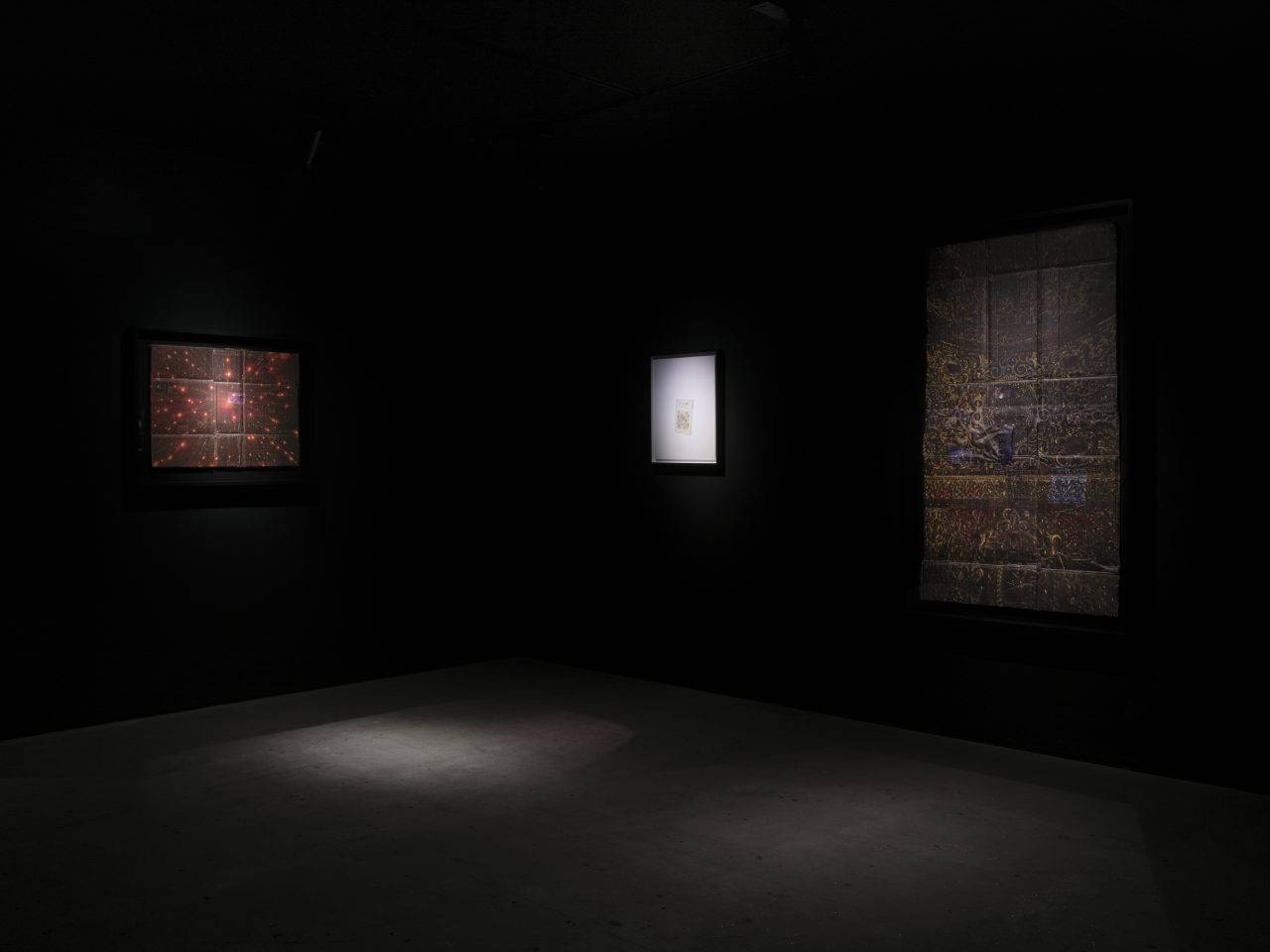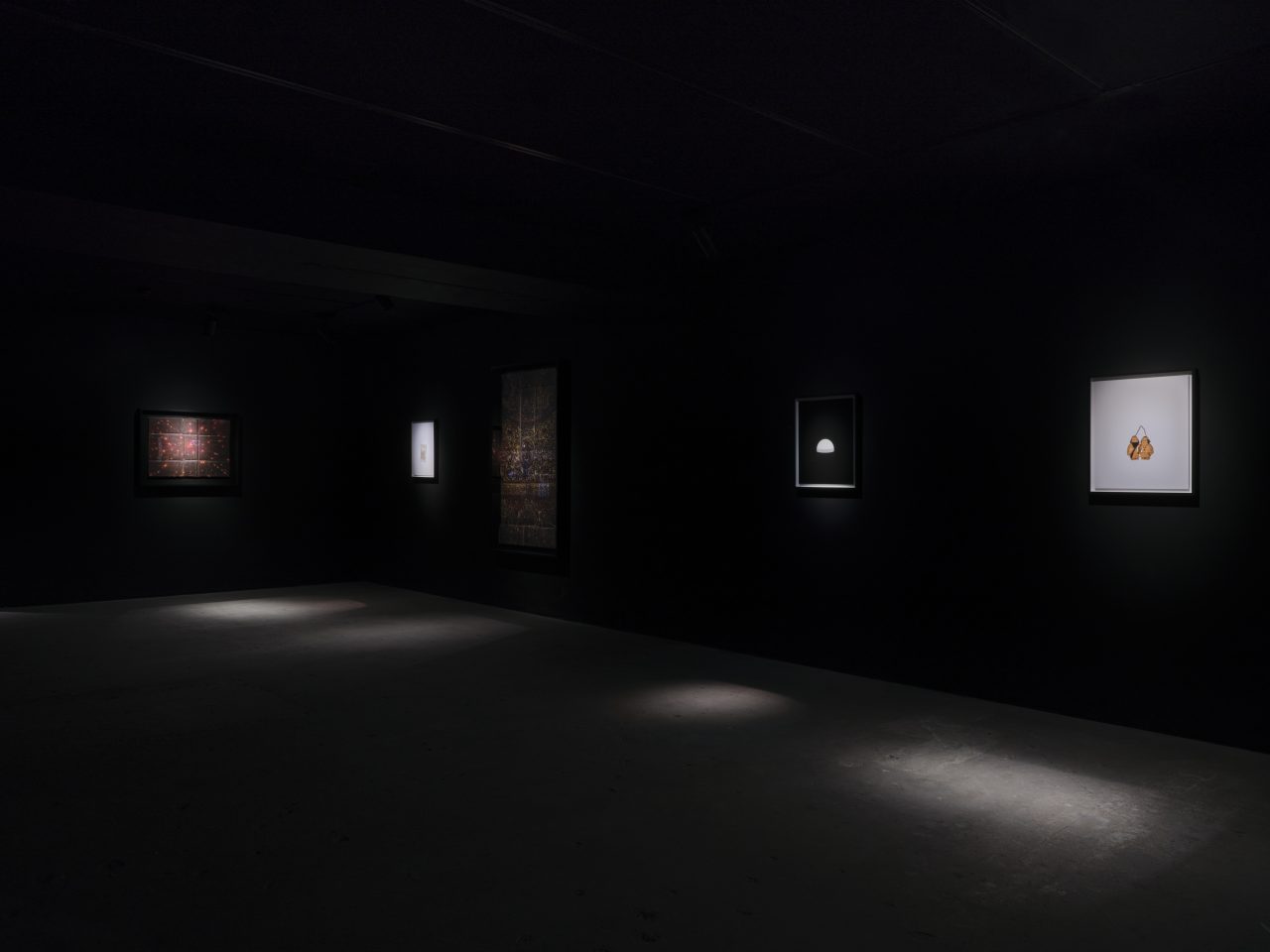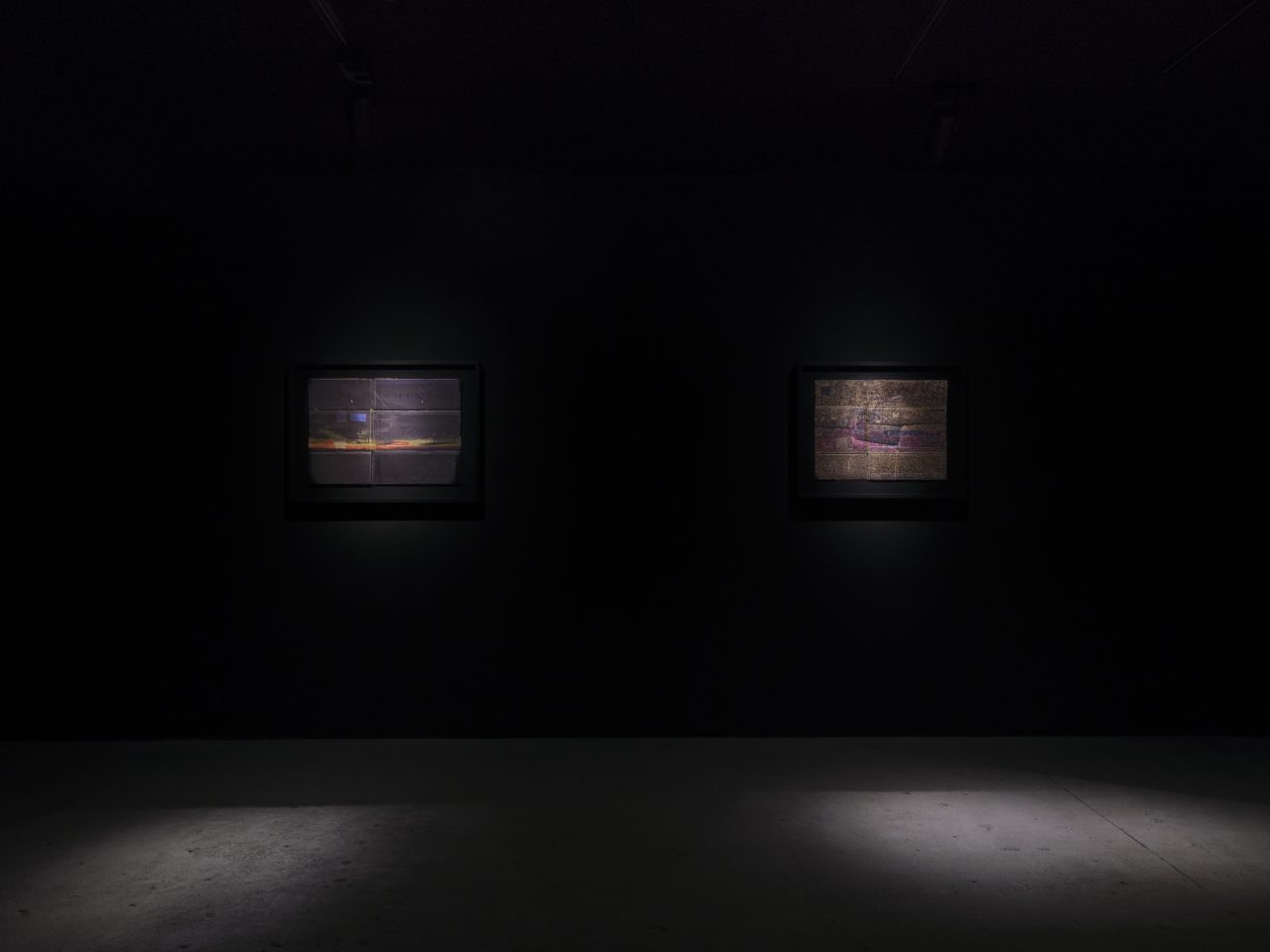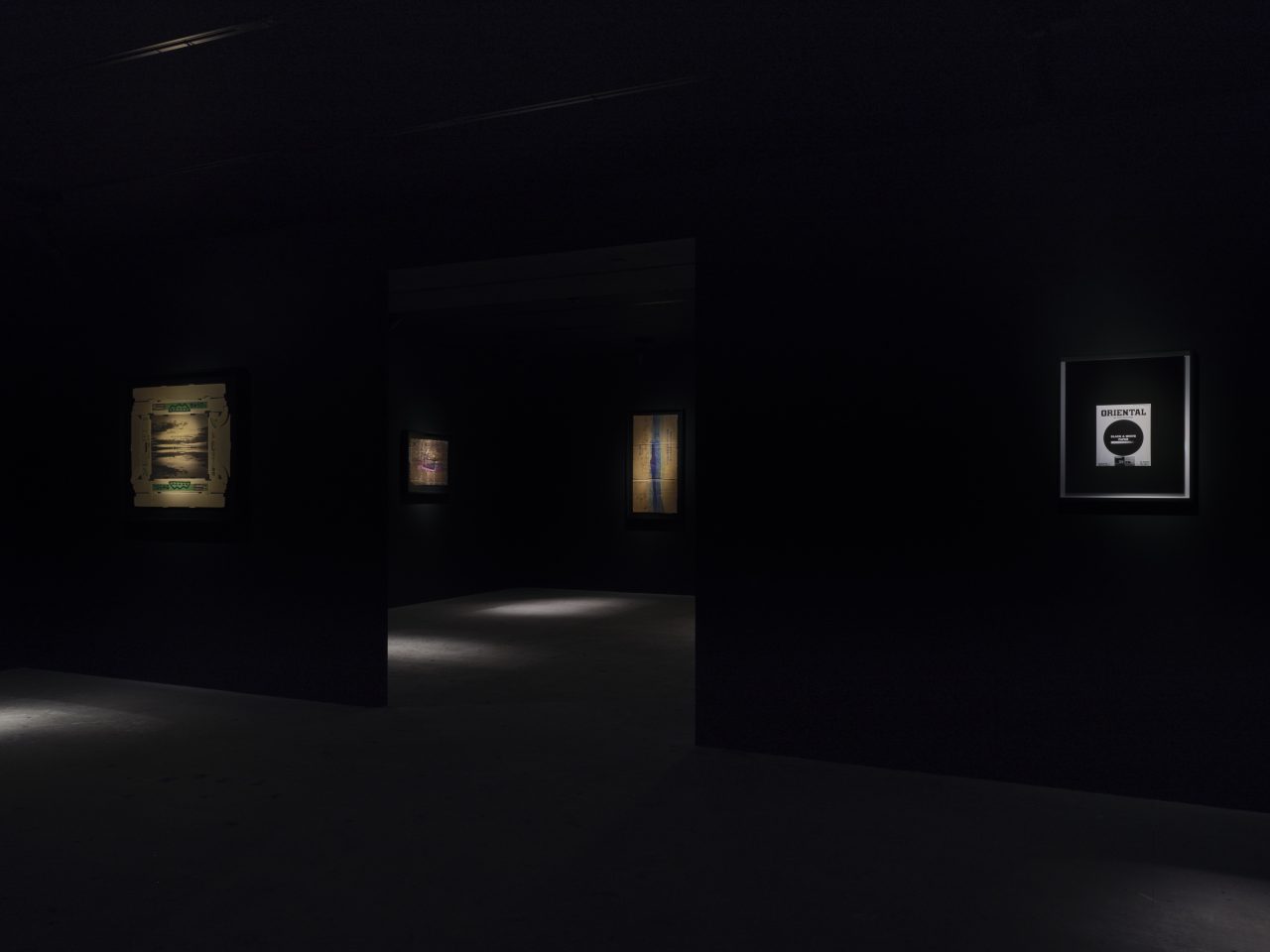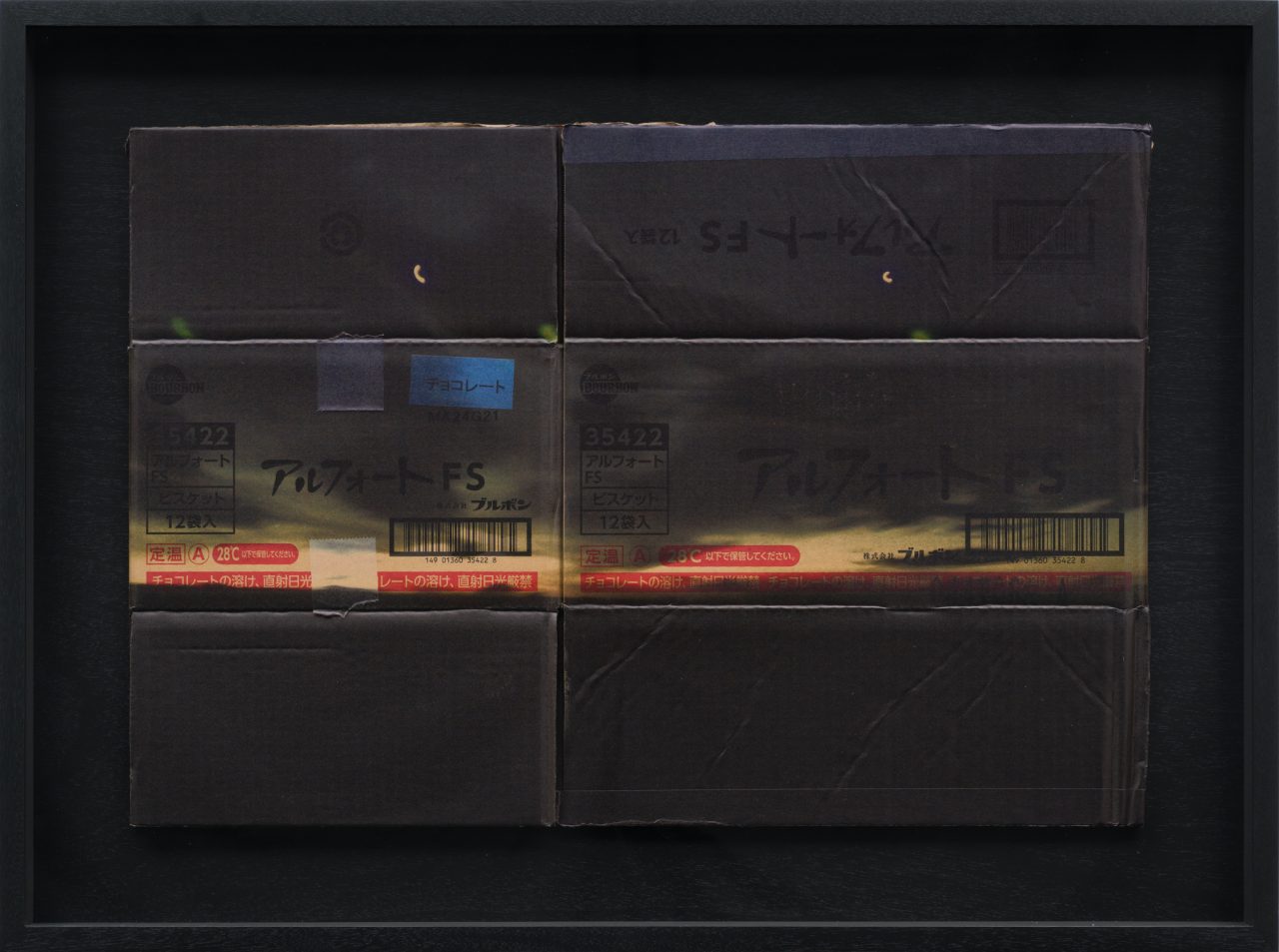Empty Gallery is pleased to present Pass, New York-based artist Taro Masushio’s second solo exhibition with the gallery. Masushio’s practice positions photography as a kind of ontological research or speculative machine within a nexus which also includes video, drawing, and sculpture. Often departing from an engagement with informal (or imaginary) archives, Masushio investigates the capacity of images, not to document an underlying reality, but to manipulate, enframe, and ultimately, extend our own perception.
Pass originates from Masushio’s intimate engagement with the touristic travel photography of his own father––a retired Japanese school teacher with a penchant for excursions to far-flung and exotic locales. He appropriates and transforms these superficially unremarkable vacation images––which mingle conventional romanticism with a certain hazy coloniality––printing them on scavenged cardboard used for the bulk shipment of Japanese consumer goods. Richly colored snapshots are attenuated by scores and creases, tears and abrasions, graphic logotypes and fragmentary slogans erupt into the artificial space-time of the image. These boxes can be read as references to the spurious circulatory mechanics at work in tourism, (and its conjoined twin, the global art world) as well as winking acknowledgements of the exhibition’s recycled nature—its conjuration of a kind of instant intertextuality. However, these humble boxes are also imbued with an indefinable pathos, a peculiar tenderness which is amplified by Masushio’s choice of imagery. Interspersing these new cardboard prints with a series of still-lifes—a form which he repeatedly returns to––Masushio assembles a kind of synthetic travelogue-cum-diary speculating on the entangled nature of voyages both spiritual and terrestrial, the masculine exploratory impulse, and the interminable paradigm of filiation.
Early in the exhibition, the viewer encounters Untitled 37, a color still-life of a small book belonging to Masushio’s father—Rimbaud’s collected poetry in Japanese translation. As photographed by his son, this appropriated object becomes one potential portal into the conceptual and affective movements which animate Pass. Speaking through the nexus of associations surrounding the merchant-poet, Untitled 37 motions towards both the continual oscillation between realism and romanticism and the incestuous generativity of the paternal relation which thematically define the exhibition.
Elsewhere, Masushio’s video Untitled (Dear Dante) depicts twin sparklers hovering in front of a blurry horizon. They billow vaporous fumes across the frame, obscuring our vision. A moment of shared leisure between father and son is simultaneously captured and elided, subjected to a promiscuous logic. A voice recites a letter to a former lover, guiding us along a narrative of erotic longing and self-annihilating desire. Accompanied by this soundtrack, the images in the video gradually rearrange themselves. We see anew the chemical reactions of the flames, the powdered strontium mingling with nitrate: spurts of burning metal ejected, arcing into the empty air––oxygen spent in a perpetual forging. Towards the end of the film, speaking of a possible reunion with his lover, the voice asks, “Doesn’t the fact that the earth is round seem enough reason that this should happen?” This invocation of a polytemporal homecoming, of a return which is both progression and continuation of an existing loop infects the show with an image: the tracing of a sphere which is at once the earthly globe and the circular gesture of asphyxiation. Representation too, can be a form of asphyxiation, one which can only be passed through by navigating the fecundity of images––their charged and self-generating simultaneity. The structural antinomies which define the exhibition—father/son, self/other, physical/spiritual, straight/queer––are revealed to be aspects of the same unknowable object, collapsing into one another with the most minute change in perspective. Autobiography is here both hermeneutic game and philosophical proposition. The circle becomes the Möbius strip.
